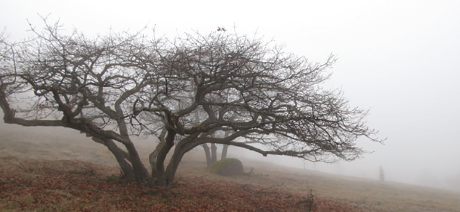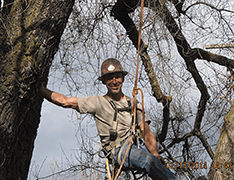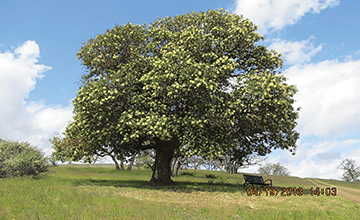High Voltage Conductors, Trees and Power Lines
High voltage conductors, or power lines, have a right of way around them, and for good reason. If a tree makes contact with a high voltage conductor, it could cause a fire. If you make contact with a tree that is in contact with a high voltage line and the conditions are right, you could become a fuse…
The tree does not have to be wet on the outside; it just has to be alive!
Typically these wires are highest on the pole, are attached by insulators to a cross arm, or directly on the pole itself. Treat EVERY wire, and EVERY tree around power lines like they can kill you!
The line clearance tree trimmers have a tough job, I know this as it used to be my job some years back. Obtaining the mandated clearance without screwing up the tree is quite difficult, but a necessary evil.
While not arboriculture in the strictest sense of the word, most line clearance trimmers are tree guys (and gals) at heart, with one of the most dangerous jobs on the planet. Most trees are pruned on some sort of cycle, usually 2-3 years, but this can vary greatly due to species, rainfall, specific loads on the wire, clearances set by pre-inspectors, and such.
Planting trees under wires is a double edged sword, the idea of blocking the ugly pole and wires, with the eventuality that the tree may have to by “pruned” to maintain clearance with the wire you were trying to block out in the first place, so, plan(t) accordingly.
More frequent pruning making many small cuts is one way to avoid the drastic pruning that can leave your tree looking like a turkey vulture drying its wings in the morning.
Running the conductors underground is another option, but be sitting down when you get the bill for that one, trust me. It is very expensive to insulate and isolate high voltage power lines, and almost all of the high voltage power lines around these parts have little or no insulation on them whatsoever…
A pole top extension may be the ticket, but get your order in early as the power company will probably put your request at the end of their list of stuff to do…
Re-routing the conductors may involve the installation of a pole or two, but would be cheaper than running them underground.
Do not take the job of pruning your tree into your own hands if it is within 10′ of an of energized conductor, or could, in any way, make contact with a hot (they are all hot, remember?) wire at any time.
There is a wide variety of cultivars developed for planting around wires, usually columnar, or “upright” varieties, but the look may not be what suits your plans.
A slow growing tree planted under a power line and pruned regularly, yearly or so, works great, looks good and satisfies the clearance issues almost forever. Like I’ve said before, it is very easy to keep a big tree small, but almost impossible to MAKE a big tree small.
Line clearance tree trimmers are issued a circuit map, and must adhere to pruning clearances set by the higher ups, fudging one way or another on a clearance can land them in hot water, either with the tree owner, or the person that signs their paycheck, but they will usually try their best to make everyone happy.
Low voltage power lines, while still dangerous enough to kill you, don’t require the kind of clearance, or pose the same potential for starting a fire. The house drop, or service wire that feeds your house after it has been converted from high voltage vie a transformer is an example of this. These conductors usually require little or no pruning, unless there is a rubbing issue, or a situation where bare conductors can be slapped together by branches blowing around in the wind.
Other service drops such as phone or internet are pretty much ignored, unless the wire itself is being compromised from rubbing, etc.
If you think your tree may be interfering with a high voltage wire, or better yet, a high voltage wire is interfering with your tree, DO NOT TOUCH IT! Call your power provider and have them check it out.




